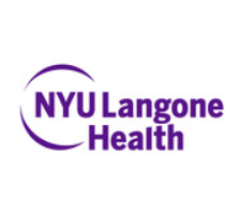
June 25, 2012 — Among six large integrated healthcare systems between 1996 and 2010 there was a substantial increase in the use of advanced diagnostic imaging, including approximately a tripling of the use of computed tomography (CT) and nearly a quadrupling of the use of magnetic resonance imaging (MRI), as well as a substantial increase in estimated radiation exposure, according to a study in the June 13 issue of the Journal of the American Medical Association (JAMA).
"The use of diagnostic imaging in the Medicare population has increased significantly over the last two decades, particularly using expensive new technologies such as CT, MRI and nuclear medicine positron emission tomography (PET). The development and improvement in these advanced diagnostic imaging technologies is widely credited with leading to earlier and more accurate diagnoses of disease using noninvasive techniques," said the article.
The authors note that CT and nuclear medicine examinations deliver much higher doses of ionizing radiation than conventional radiographs, and evidence has linked exposure to radiation levels in this range with the development of radiation-induced cancers.
"Most studies that have evaluated patterns of diagnostic imaging have assessed insurance claims for fee-for-service insured populations where financial incentives encourage imaging. No large, multisite studies have assessed imaging trends in integrated health care delivery systems that are clinically and fiscally accountable for the outcomes and health status of the population served. Understanding imaging utilization and associated radiation exposure in these settings could help us determine how much of the increase in imaging may be independent of direct financial incentives," the researchers wrote.
Rebecca Smith-Bindman, M.D., of the University of California, San Francisco (UCSF), and colleagues conducted a study to estimate trends in imaging utilization and associated radiation exposure among members of integrated health care systems. The study consisted of an analysis of electronic records of members of six large integrated health systems from different regions of the United States. Review of medical records allowed estimation of radiation exposure from selected tests. Between one million and two million member-patients were included each year from 1996 to 2010. Enrollees underwent a total of 30.9 million imaging examinations during the study period, reflecting an average of 1.18 tests per person per year, of which 35 percent involved advanced diagnostic imaging (i.e., CT, MRI, nuclear medicine and ultrasound).
The researchers found that use of radiography and angiography/fluoroscopy rates were relatively stable over time: radiography increased 1.2 percent per year, and angiography/fluoroscopy decreased 1.3 percent per year. "In contrast, the utilization of advanced diagnostic imaging changed markedly. CT examinations tripled (52/1000 enrollees in 1996 to 149/1000 in 2010, 7.8 percent annual growth); MRIs quadrupled (17/1000 to 65/1000,10 percent annual growth); ultrasounds approximately doubled over the same period (134/1000 to 230/1000, 3.9 percent annual growth). Nuclear medicine rates decreased (32/1000 to 21/1000, 3 percent annual decline), although after 2004, PET imaging rates increased from 0.24 per 1,000 enrollees to 3.6 per 1,000 enrollees, 57 percent annual growth."
The authors also found that the increase in the utilization of CT was associated with an increase in estimated exposure to radiation, with the average per capita effective dose increasing from 1.2 mSv in 1996 to 2.3 mSv in 2010. The percent of enrollees who received high (> 20-30 mSv) or very high (> 50 mSv) radiation exposure during a given year also approximately doubled across study years. The researchers also estimated that by 2010, 2.5 percent of enrollees received a high annual dose of greater than 20 to 50 mSv, and 1.4 percent received a very high annual dose of greater than 50 mSv. By 2010, 6.8 percent of patients who underwent imaging received a high dose of more than 20 to 50 mSv and 3.9 percent of patients received a very high dose above 50 mSv during this single year.
The researchers write that the "increase in imaging use over this period was likely driven by many factors, including improvements in the technology that have led to expansion of clinical applications, patient- and physician-generated demand, defensive medical practices and medical uncertainly — all factors that would be expected to influence utilization across all systems of medical care."
"The increase in use of advanced diagnostic imaging has almost certainly contributed to both improved patient care processes and outcomes, but there are remarkably few data to quantify the benefits of imaging. Given the high costs of imaging — estimated at $100 billion annually — and the potential risks of cancer and other harms, these benefits should be quantified and evidence-based guidelines for using imaging should be developed that clearly balance benefits against financial costs and health risk."
Editor's Note: This study was supported by the National Cancer Institute-funded Cancer Research Network Across Health Care Systems and grants from the National Institutes of Health. All authors have completed and submitted the ICMJE Form for Disclosure of Potential Conflicts of Interest and none were reported.
For more information: http://jama.jamanetwork.com


 December 10, 2025
December 10, 2025 









